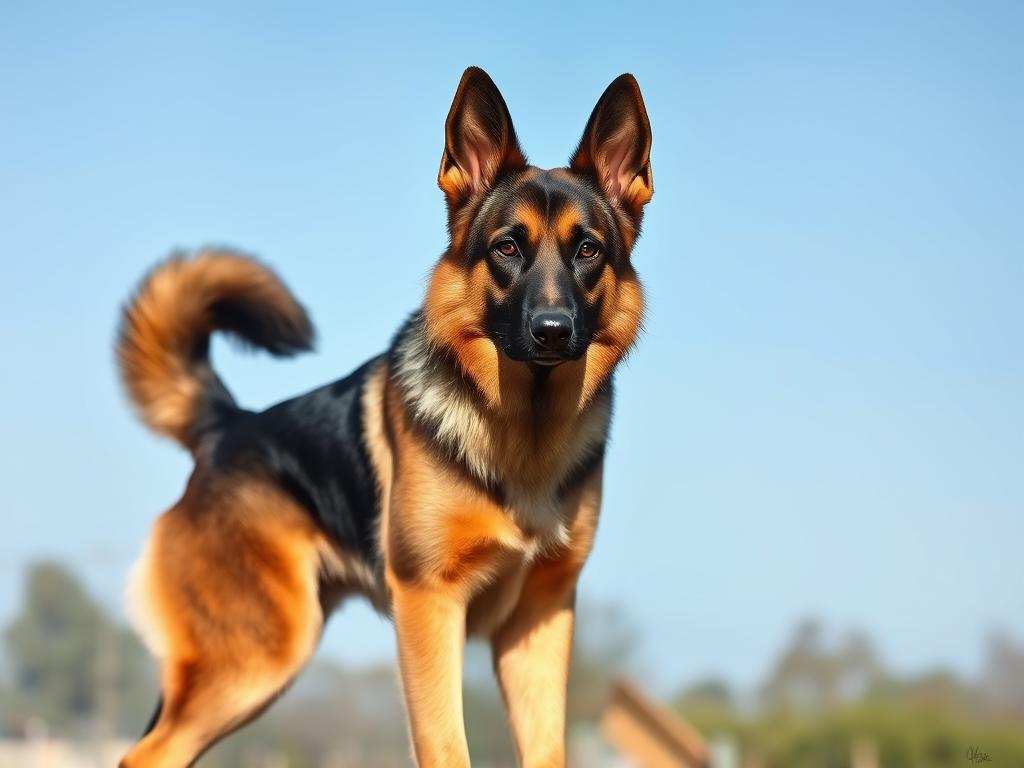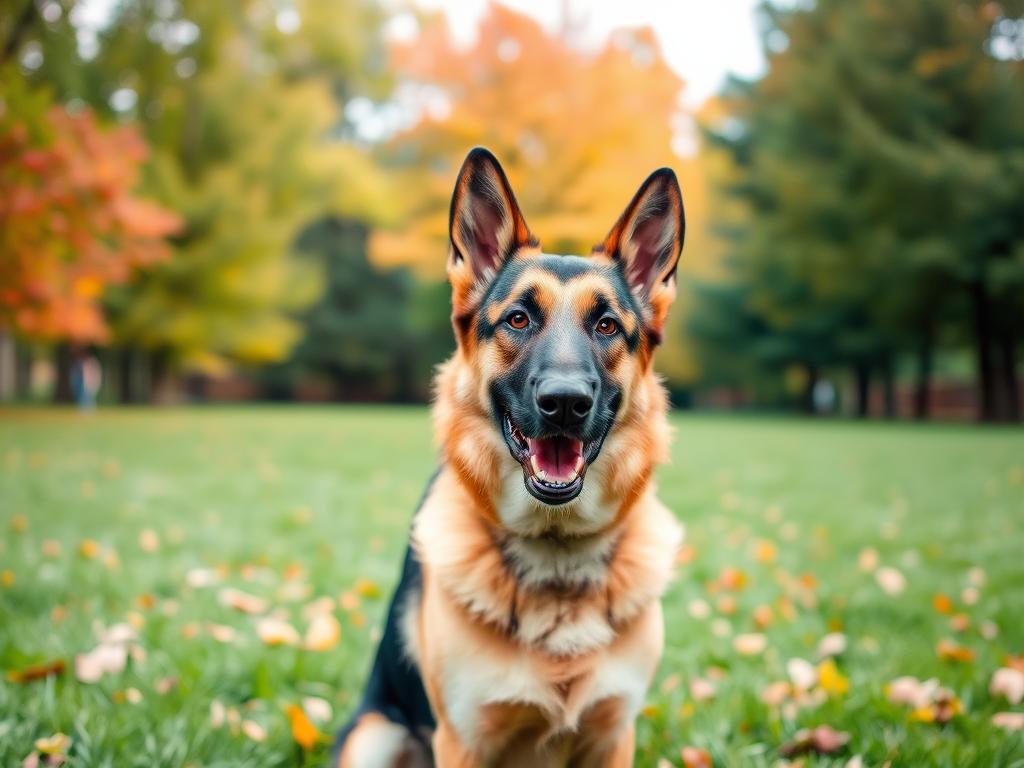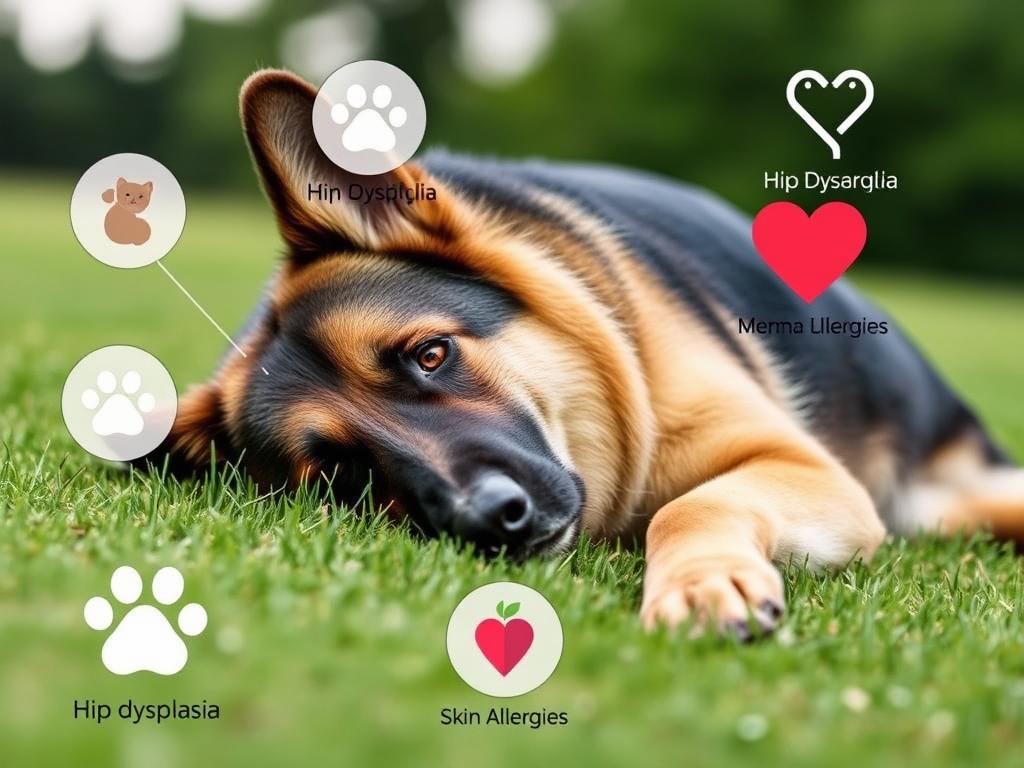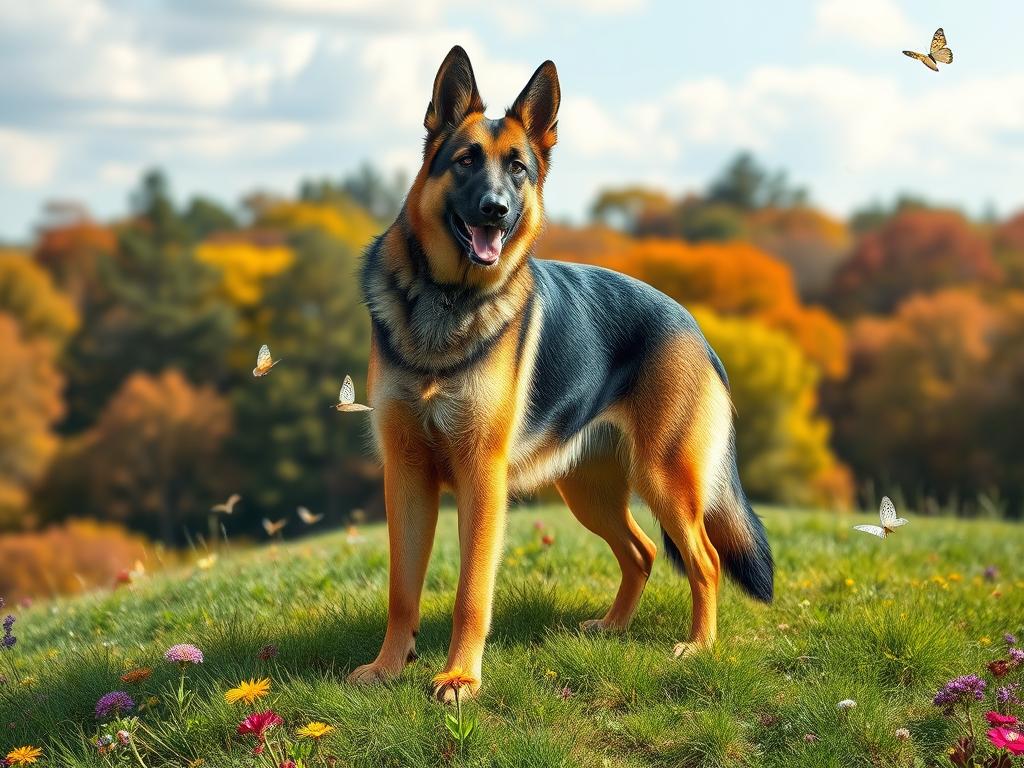Did you know that German Shepherds are among the most popular dog breeds in the world, consistently ranking in the top three for over a decade? Their striking appearance and exceptional skills have made them favorites in police and military work, but there’s much more to these incredible dogs. In this guide, you will find essential German Shepherd Dog information that covers everything from their rich history to their health considerations.
Originally bred in Germany for herding sheep in the late 1800s, the German Shepherd has evolved to become a versatile and loyal companion. Captain Max von Stephanitz played a pivotal role in shaping the breed by selecting for traits that enhance their working abilities and temperament.
German Shepherd breed facts reveal their selfless dedication as guide dogs, search-and-rescue canines, and loyal family pets. With a lifespan typically ranging from 10 to 14 years, understanding their unique traits will help you decide if a German Shepherd is the ideal addition to your family.
Key Takeaways
- German Shepherds are known for their intelligence and trainability.
- They can weigh between 50 to 90 pounds, depending on gender.
- This breed requires regular grooming due to their double coat.
- Common health issues include hip dysplasia and bloat.
- They are protective and affectionate, making them great family dogs.
- For more comprehensive insights on large dog breeds, explore this detailed guide.
Introduction to the German Shepherd Dog
The German Shepherd Dog is a remarkable breed with a storied past and distinct qualities that make it beloved worldwide. Understanding the German Shepherd’s history offers insight into its evolution from a herding dog to a versatile working companion. The breed has gained a reputation for its loyalty, intelligence, and adaptability, making it suitable for various roles such as law enforcement and therapy. This section explores the German Shepherd history, breed characteristics, and debunks common German Shepherd misconceptions.
Origin and History
The origins of the German Shepherd can be traced back to Germany in the late 1800s. Captain Max von Stephanitz played a crucial role in developing the breed, aiming to create a superior herding dog. His vision helped standardize the breed, resulting in a dog that embodies remarkable traits suited for herding, guarding, and companionship. The German Shepherd has a rich heritage, with registrations climbing significantly over the years. In 1923, over 50,000 members belonged to the Verein für Deutsche Schäferhunde, which highlights the breed’s rising popularity. For further insight, you can check out more about their history and capabilities here.
Breed Characteristics
German Shepherds are distinguished by their physical and behavioral traits. They typically stand between 22 and 26 inches tall, with males weighing between 66 and 88 pounds and females ranging from 49 to 71 pounds. Their striking image is complemented by their intelligent and confident demeanor, making them easy to train and eager to please. Common breed characteristics include a protective nature and loyalty to their families, which often instills a sense of security in the home. Understanding these traits helps potential owners appreciate the unique qualities of the German Shepherd.
Common Misconceptions
Despite their popularity, several German Shepherd misconceptions persist. Many people view them as aggressive or aloof, but this is often a misunderstanding of their reserved nature, especially around strangers. In reality, German Shepherds can be incredibly affectionate and protective companions. Proper training and socialization from a young age help counteract any misconceptions about their temperament. Recognizing these truths about the breed enhances the appreciation for their loyal character and purposeful instincts.
Physical Traits of German Shepherds
The physical traits of German Shepherds play a significant role in defining their majestic presence. This breed is notable for its impressive German Shepherd size, which makes them both strong and agile. Understanding these traits offers valuable insight into what to expect when welcoming a German Shepherd into your life.
Size and Weight
German Shepherds are classified as large dogs, with a typical weight range from 50 to 90 pounds. They stand between 22 to 26 inches at the shoulder. This robust size contributes to their reputation as excellent working dogs, making them highly effective in roles such as police and service dogs.
Coat Colors and Patterns
The coat of a German Shepherd is another distinctive feature. They possess a double coat that can vary in length from medium to long. The most recognized coat colors include black and tan, although German Shepherds can also exhibit a variety of other coat colors such as:
- All Black
- All White
- Blue
- Sable
This array of coat colors adds to the breed’s charm and appeal, making each dog unique in appearance.
Distinctive Features
Several distinctive features of German Shepherds contribute to their striking look. Their erect ears convey alertness, while their muscular body portrays strength and agility. A bushy tail further enhances their strong silhouette. These characteristics not only contribute to their physical allure but also support their capabilities as versatile working companions.

Temperament and Behavior
Understanding the German Shepherd temperament is key to ensuring a harmonious family life with German Shepherds. Their loving and protective nature makes them exceptional companions. These dogs thrive in active households where socialization and interaction are prioritized. Early exposure to various environments, people, and pets lays the foundation for stable behavior.
Family Life and Socialization
Family life with German Shepherds is enriched by their loyal demeanor. Engaging in regular social activities fosters better integration into the family unit. They excel in environments where they can interact appropriately with children and other animals. Continuous socialization helps in preventing potential behavioral issues later on.
Intelligence and Trainability
Training German Shepherds is a rewarding experience due to their high intelligence and eagerness to learn. Positive reinforcement methods work best with these dogs, leading to successful engagement. Consistency in training routines not only improves obedience but also deepens the bond between owner and pet. Keeping them mentally stimulated through various games is essential to prevent boredom and promote positive German Shepherd behavior.
Common Behavioral Traits
German Shepherds display several common behavioral traits that reflect their ancestry and upbringing. Key characteristics include:
| Behavioral Trait | Description |
|---|---|
| Vocalization | These dogs often communicate through barking, which can signify various emotions or alertness to surroundings. |
| Guarding Instinct | German Shepherds are naturally protective, making them excellent watchdogs and family protectors. |
| Playfulness | They enjoy interactive play, which enhances their mental stimulation and supports family bonding. |
| Affectionate Nature | Known for their loyalty, they form strong attachments to their families and seek affection and companionship. |
| Trainability | With proper training, their intelligence shines through, allowing them to excel in various roles. |

Understanding these traits enhances the experience of owning a German Shepherd. The development of a well-behaved dog ultimately hinges on early socialization and appropriate training methods. For those interested in learning more about intelligent breeds and their training, explore this informative resource.
Health and Care Requirements
Maintaining the health and well-being of German Shepherds involves understanding their specific needs related to health issues, nutrition, and grooming. These dogs are admired for their loyalty and intelligence but require dedicated care to thrive.
Common Health Issues
German Shepherds, while generally healthy, are prone to some specific health conditions. Among the most prevalent are hip and elbow dysplasia, affecting mobility and overall comfort. Research indicates that about 20% of German Shepherds may suffer from hip dysplasia. Other German Shepherd health issues include kidney diseases and various cancers like Hemangiosarcoma and bone cancer. Additionally, gastric dilation-volvulus (GDV) can be a life-threatening condition in this breed due to their deep-chested nature. Regular veterinary check-ups enhance early detection and intervention for such health concerns.
Nutrition and Diet Tips
Nutrition for German Shepherds plays a pivotal role in their overall health. High-quality dog food, approved by the Association of American Feed Control Officials (AAFCO), is crucial. Puppies require frequent feeding, around three to four times daily, transitioning to twice a day as adults. It is essential to choose a diet comprising 18% protein and 5% fat for adults, while puppies and lactating bitches need at least 22% protein and 8% fat. Supplementing their diet with joint supports, probiotics, or natural additions can boost overall health. For informative insights on selecting the best food for coat health, consider visiting this resource.
Grooming Needs
Regular grooming is a fundamental part of caring for German Shepherds due to their year-round shedding. Grooming German Shepherds involves monthly baths, nail trimming, and occasional visits to the vet for vaccinations and deworming. Using the right tools, such as slicker brushes, can help manage their dense fur effectively. Long-haired varieties in hot climates require particular attention to prevent overheating. Ensuring their coat remains clean and given proper care contributes to their overall grooming and health management.

| Health Issue | Details | Frequency |
|---|---|---|
| Hip Dysplasia | Abnormal development of hip joint | Affects about 20% of the breed |
| GDV (Bloat) | Life-threatening condition of stomach twisting | Common in deep-chested breeds |
| Cancers | Includes Hemangiosarcoma, bone, and lung cancers | Prevalent in older dogs |
| Pannus | Eye condition that may cause blindness | More common in high UV exposure areas |
| Exocrine Pancreatic Insufficiency (EPI) | Requires lifelong supplementation | Specific to the breed |
Making the Best Choice
Choosing to welcome a German Shepherd into your home is an exciting decision filled with responsibility. One of the first steps in this journey is choosing a German Shepherd breeder. A reputable breeder should provide health screenings for common conditions that affect this breed, like hip and elbow dysplasia, and allow prospective owners to visit and see the puppies’ living environment. This ensures that you are starting with a healthy, well-adjusted dog that can become a scared companion.
Finding a Reputable Breeder
An important consideration is to verify that the breeder adheres to best practices in breeding and raising dogs. The American Kennel Club (AKC) Marketplace is a great resource for connecting with responsible breeders who can assess your lifestyle to find a puppy that suits you. It’s vital to ask questions about the puppy’s lineage and health to ensure a proper match for your family.
Adoption Considerations
If accessing a breeder isn’t viable for you, adopting a German Shepherd from a shelter is equally rewarding. Keep in mind some German Shepherd adoption tips: assess the dog’s history, behavior, and any health requirements they may have. Many dogs in shelters are looking for a second chance, so your decision to adopt can make a significant difference in their lives.
Preparing Your Home for a German Shepherd
Once you’ve located a breeder or shelter, preparing your home for a German Shepherd is essential. Ensure there is adequate space for exercise and play, as this breed thrives on physical activity. Stock up on necessary supplies, including food, bedding, toys, and grooming tools. Establishing routines and boundaries will also help your new furry friend adapt seamlessly into the family structure.
To learn more about this amazing breed, explore further at understanding the essentials of owning a German.











